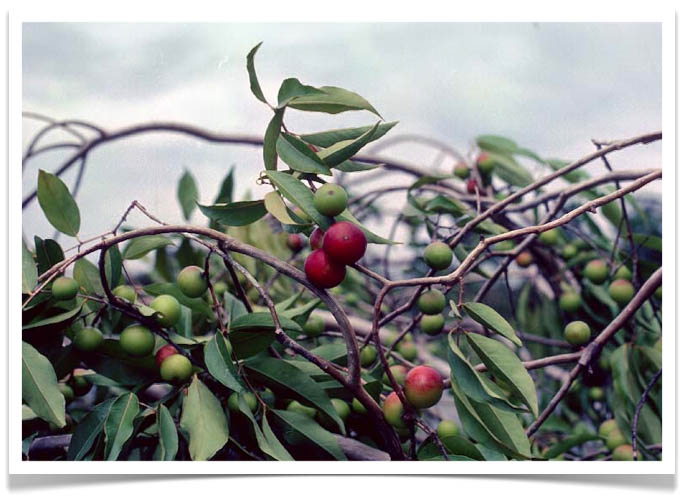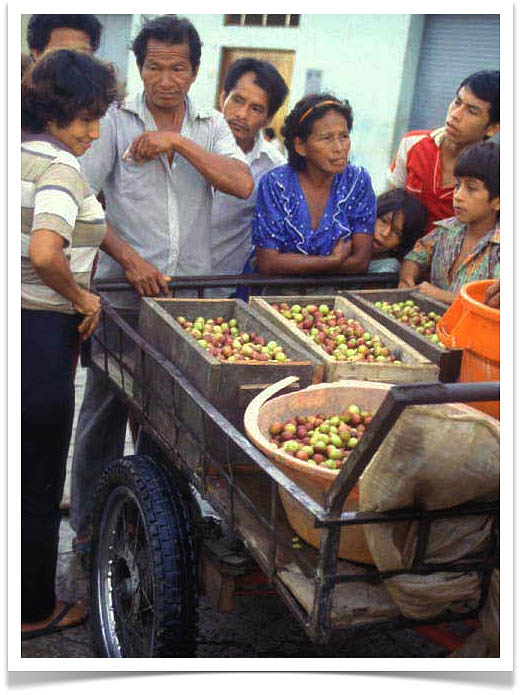Re-Visiting Camu-camu
 Thursday, July 17, 2014 at 8:57AM
Thursday, July 17, 2014 at 8:57AM 
Graduate student Meredith Martin (Yale Forestry) re-sampled the camu-camu (see Camu-camu) inventory plots that I originally established in 1984 along the banks of an ox-bow lake (shown above) in Peruvian Amazonia. Although the population had been exploited commercially for the past 27 years, Meredith found that the species continues to regenerate on the site, albeit at a lower rate, and that camu-camu is still an important wild-harvested resource along the lower Ucayali River. Extreme hydrological events since the late 1980's and the natural successional closure of the ox-bow lak have had a greater impact on the dynamics of this plant population than annual harvetsing. From the standpoint of sustainable forest use, this is an extremely important finding. [NOTE: A copy of the paper detailing this work (Economic Botany 68) can be found here].








